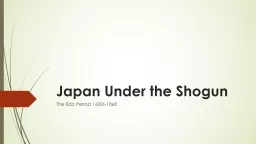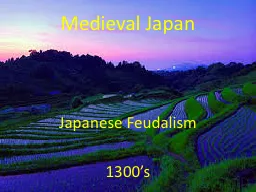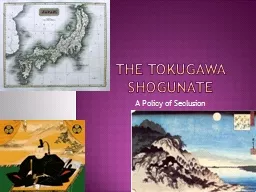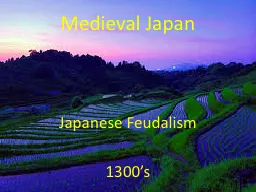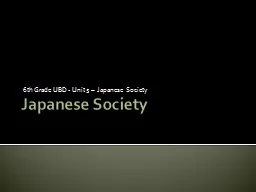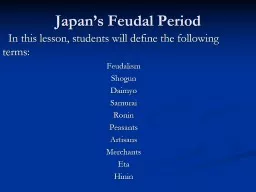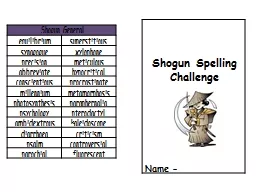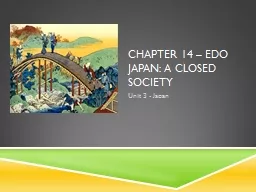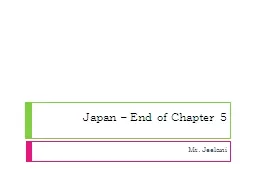PPT-Japan Under the Shogun
Author : liane-varnes | Published Date : 2017-11-01
The Edo Period 1600s1868 Unlimited Power in Feudal Japan Feudal Japan was ruled by the Emperor who was believed to be divine and whose rule was passed down through
Presentation Embed Code
Download Presentation
Download Presentation The PPT/PDF document "Japan Under the Shogun" is the property of its rightful owner. Permission is granted to download and print the materials on this website for personal, non-commercial use only, and to display it on your personal computer provided you do not modify the materials and that you retain all copyright notices contained in the materials. By downloading content from our website, you accept the terms of this agreement.
Japan Under the Shogun: Transcript
Download Rules Of Document
"Japan Under the Shogun"The content belongs to its owner. You may download and print it for personal use, without modification, and keep all copyright notices. By downloading, you agree to these terms.
Related Documents

